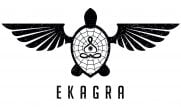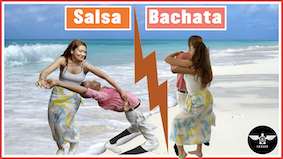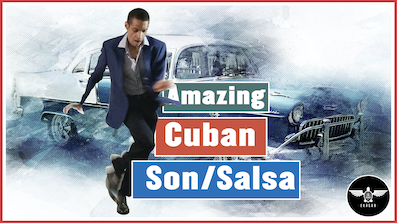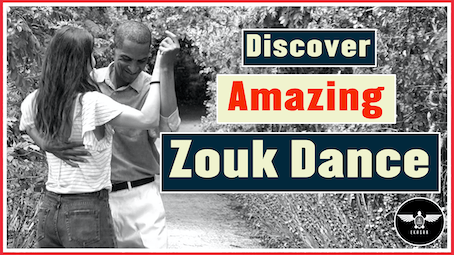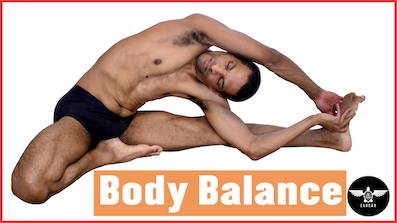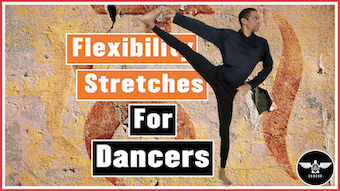Discover a proven system to get flexible fast that will guarantee excellent results within a few weeks. Enter this 48-day challenge which coincidently represents an entire mandala. The system proposed will revolutionize your flexibility.

The exercises are, by themselves, at anyone’s level. But it’s the mix of the techniques and your regularity that will bear the result. 48 Days is easily passed. Yet, at times you will want to give up. DON’T GIVE UP. That way, you would have a big ✅ to put on your achievement list for the year.
1. How long does it take to get flexible?
We all want to get flexible fast, but the time it takes depends on many factors. How old are you? How is your weight? What do your nutritional habits look like? How is your breathing? Do you sleep well at night? As you can see, many parameters can impact the amount of time it takes to be flexible. Even your sleeping pattern can influence your flexibility.
Instead of asking how long it will take you to get flexible, how about building a tracking system that compares where you want to be with your progress over time? For example, if your objective is to touch your toes after 48 days, then we will assess how far you have progressed in T30 vs. T15 vs. T1 for example. That will take a lot of pressure off your shoulders, as the comparison game is one of the most prominent traps people fall into.
2. How quickly can I improve my flexibility?
Now that we have a 48days framework, with constant assessment, we can move to the next step. If you dedicate about 1 hour every day for 48 days, you will see tangible results in your flexibility. This timing is because your body (and your mind) will have to overcome a few challenges. First, you might feel excited to start something new, which will help you in the first week. Then slowly, you will start feeling pain, making excuses, and you might even want to give up. Finally, you will try and postpone to “tomorrow”. And before you know it, three months would have passed. Seen it many times, and it happened to me a few times too. Yet, there is no way around it, and your delays will make the task more difficult. So don’t delay and start now.
2.1. Avoid the death trap
If you feel like you want to give up, guess what: that’s excellent news. It means your body and the whole system recognize that you are doing something to change the status quo and are fighting against it. The question is pretty simple. Does this entire system (body/mind etc.) belong to you? Or are you its slave? Subdue and conquer them, and they will submit to you.
On the 48 days challenge, you will likely be in control around days 27-33. You will be close to the finishing line and excited to march forward by then. On the other hand, the danger zone is between days 15 and 30. That’s when your body and mind will do everything to challenge you. Fight it off. Remember that you are in charge.

3. What system will get me flexible fast?
I won’t challenge you on your motivation to be flexible fast (since this should be a lifetime goal). Instead, I will assume you want to see meaningful changes in your life within a relatively short time. Yet, you must have a system to see such changes and get flexible fast. A way that ensures that the only thing you need to worry about is showing up. I, therefore, designed such as system and will break it down as follow:
3.1. Proper Recovery
To complete a 48 days flexibility challenge, you must be safe from pain. Therefore, the system must ensure proper recovery aimed at constant repetition.
3.2. Bell shape
For the session to work wonders, it needs to have a bell-shaped structure, where you start by building up heat. Then, in the second stage, you increase the intensity. Finally, we will decrease that intensity to land safely.

3.3. Coordination Breath + Physical activity = Gravity work
Thirdly, you need to find a way to not feel any pain during the exercises but still see results. The best way to achieve that is by coordinating your breathing with your physical activity. This might sound strange and generic “stuff” from yoga people, but I experienced and observed it many times. And chances are, you also know and experience it.
Try to make some push-ups or forward bending moves (warm-up before). Then pass through your comfort zone. You will see that you start breathing heavily and feel like crashing down. On the other hand, when you will do your routine and follow my instructions, your breathing will be “trapped” in your flexibility exercises after a while. You will feel like, “hey, I don’t even force it, and it’s happening”. That’s because you would have synchronized your breathing pattern with your body. Leave the rest to GRAVITY.
Your breathing will be “trapped” into your flexibility
3.4. Heat-up + Recovery = Get Flexible Fast
The final point is the Heat-up process. This and the recovery are the two most important sets that guarantee that you get flexible fast. Refrain from believing any magical 5-minute solutions. It’s the repetition of the correct technique over time that will get you flexible fast. And to be able to repeat consistently, you must be ….there; not, out because you did not heat up properly (and can’t practice for 3 or 4 months). Heat-up makes sure you can do the flexibility session. And recovery/cool down ensures you are correctly centered so that you feel energized, not broken.
4. The best program to get flexible fast
Now that we cleared the timeline and framework let’s break down each step into the exercises we will perform. We will separate the session in 3 categories, following the chart above. Heat-up should take you around 10-15 minutes. Please do not neglect this. Next, we dive into the heart of the flexibility session, working on many aspects of your body that ensure you get flexible fast. Finally, we will land nicely with a relaxation exercise followed by breathing techniques.
4.1. Heat-up session
This part is crucial to ensure your flexibility stretches are going well. I have created this system based on techniques used in dance and yoga. It starts with a body isolation part, then body movement and some yoga techniques. Therefore, this makes the heat-up session functional by already introducing some of the stretches we will work on. You don’t need to do the last part, which is about dance. And if there are physically challenging movements, you can skip them. In essence, if you are new to flexibility, you should not be able to do any of these exercises correctly, and that’s ok. I have been doing this for many years. I strongly suggest you follow the flow of the video because I go into specific parts of your body that we will put to work. And if the video is too fast, slow it down.
Now, let’s dive into the exercises that will get you flexible fast. Again, you will see the result because we will work specifically on the parts of the body that open up its flexibility.
4.2. Flexibility session
We will split this session is 3 parts:
▪️ Hip openers
Hip-opener exercises are game changers. They take you from a stage where you might be trying to execute a pose for many months unsuccessfully to the point where it happens, and you almost wonder how. These will help relax the gluteus and open up the hips.
▪️ Hamstrings
The proposed exercise series will render the hamstrings muscles and hip joints more flexible. The key here is to have relaxed breathing. If you feel pain and the will to rush, lower the intensity of the stretch. Focus on synchronizing both stretches and breathing together.
We will bend from different positions. Along the way, I will explain the benefits of the stretches.
▪️ Upper-parts
This is not necessarily an area that receives much attention, but working on the upper parts of your body is as essential as the lower ones. We will work on specific exercises that relax the arms, create flexibility around the shoulders and straighten the spine.
You will learn to reach both hands behind your back and the ceiling with your arms. It will be more challenging than it sounds.
▪️ Back/spine maintenance
The last part of our flexibility session deals with restoring the alignment of your spine. We put our back to work from all the bending moves we did. Even if we did it safely, we still want to readjust the spine and relax our back.
4.3. Recovery
To repeat your flexibility session regularly, you must reset your body. This reset takes place during the recovery practice. There are two parts to recovery. One, where you lie down and breathe slowly. Another one is sitting in a meditative posture and executing breathing exercises.
▪️ Guidance
✪ Lie down
Lie flat on your back with your palms open. Spread your legs about 2 feet apart. As you take slow and deep breaths, you let these breaths travel all over your body, paying particular attention to places that were put under stress. You might, for example, start from your toes, then focus on your ankles, knees, joints etc.
✪ Breathing
Seat in a comfortable position where your spine is straight. As we do three exercises, ensure your eyes are closed, and your breathing patterns are regular.
Watch the full session here. If you have any questions please don’t hesitate to let me know.
5. When can I see results?
Most people want to know, “when will I see improvement?” but many fail to recognize when significant progress is happening. That’s because they are too focused on the complete execution of the stretch. And what tends to happen is that people give up even if they are on the right path. I, therefore, created a checklist to help you track your progress over time. T0 stands for the day you start (we can call it T1, but I like T0 because, in essence, you have not done anything yet). If you follow this checklist, you will be able to assess where you need to put more effort, what is going well, etc.
| FLEXIBILITY STRETCHES CHALLENGE | T0. | T15. | T30. | T48. |
| ✅ Breathing 📌 Record your breathing at the beginning of this journey: Is it heavy, jerky? Do you breathe with your mouth? 📌 Then compare with Day 15, 30, 48. Is it getting better? | ||||
| ✅ Hamstrings improvement 📌 Record how deep your bends go after few weeks, compared to your starting point. 📌 Are you able to synchronise your breath with your bends. Is it more or less painful? | ||||
| ✅ Hips openers 📌 Do the same type of recording as previously. This will be a real test of your progress since these exercises (cross legs bend, etc..) are designed to help with the flexibility of the hips. | ||||
| ✅ Hands to Feet 📌 Are you able to reach your feet with your hands? 📌 Can you keep the position for a little while? | ||||
| ✅ Spine twists 📌 Are you able to execute the pose fully compared to when you started? 📌 Where does the blockage occur? 📌 Do you need to go back to hips opener exercises? 📌 Can you bend your back more easily after 1 months? | ||||
| ✅ Your palms/breathing during recovery 📌 One key indicators of your progress during recovery is how open can you get the palms of your hands. When you lie on your back there are specific reasons why your palms tend to stay close. Hopefully with a set routine and the recovery exercises at the end, you will be able to relax more. 📌 Are you able to control the rhythm of your breath after few days of breathing exercises? 📌 Do you feel your breath and stretches helping each others? |
6. What to avoid?
There are 3 main factors that can impede your progress. Pay special attention to these points.
6.1. Stretching cold
You need to heat up because flexibility is unlike any other physical exercise. You will instantly pay the price if you don’t heat up. Your body needs this heat to relax your muscles and avow flexibility to happen. Just imagine you are trying to forge iron. You need to bring the metal to a high temperature so you can shape it as you like. It’s the same with your body.
6.2. Do too much too fast
When people start something new, they tend to let themselves be carried away by excitement. While enthusiasm is desired, you should proceed with care for your body. After all, aren’t you here precisely for that purpose? One of the critical ambushes people fall into is when they try to do too much too fast. If you think one of the exercises I propose is a bit complicated, do not carry on. Approach it slowly, test it, then taste it. You have time on your side; use it.
6.3. Carry on despite pain
Struggle is one thing, sharp pains another thing entirely. Stop immediately if you feel some severe pain. Just go back to the checklist and note the little progress and difficulties. Over time, you will be able to see tremendous results.
Discover new, untapped materials
Be the first one to check-out all the exciting info I put out on Salsa, Zumba, Bachata, Zouk and other Afro-Cuban dances. I have many thrilling programs that will transform and challenge you. These life-changing and great VIP programs can take you from novice to master in less than 3 months. They are badass and will definitely introduce new muscles to your body.
